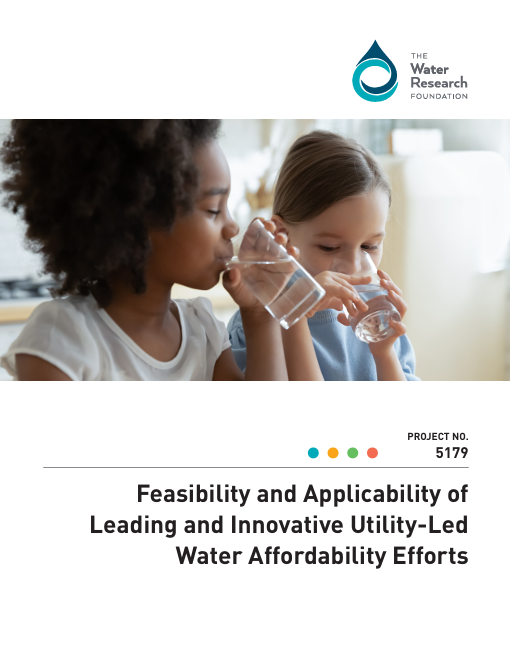Feasibility and Applicability of Leading and Innovative Utility-Led Water Affordability Efforts

Feasibility and Applicability of Leading and Innovative Utility-Led Water Affordability Efforts
View and download the report on the Water Research Foundation website here.
Overview
Over the past decade, as the cost to operate and maintain safe, reliable water and wastewater services has continued to rise, many utilities have taken proactive steps to reduce the burden of increasing costs for customers, especially those who are not able to afford their bills. Water and wastewater utilities have applied a diverse array of leading and innovative affordability programs and practices to address this challenge. Still, gaps in knowledge around what strategies are most effective remain. This project fills some of these gaps by documenting leading and innovative utility-led water and wastewater affordability programs and practices and the feasibility, costs, and benefits of implementation for utilities and customers in need.
Key Takeaways
The top leading and innovative water and wastewater utility affordability strategies identified included:
- Trust-building, partnerships, and clear communication among utilities, decision-makers, and communities help overcome resistance to and help build support for affordability efforts.
- Successful programs are locally tailored, combine multiple approaches, and link to other community resources.
- Water efficiency and leak repair efforts reduce bills and home damage; leading programs offer free devices to low-income households.
- Partnerships with nonprofits, CBOs, and agencies improve outreach, enrollment, and implementation.
- Targeted outreach and simplified, multilingual materials—plus options like automatic enrollment—boost engagement.
- Utilities use income-based metrics to assess affordability, but innovation depends on tracking broader impacts and securing more resources for evaluation.

